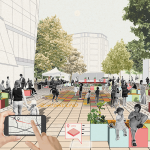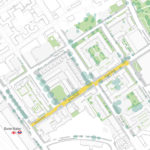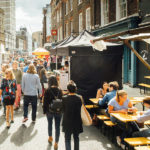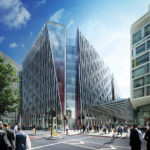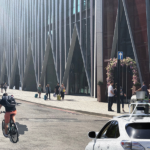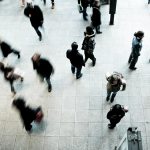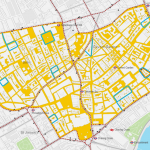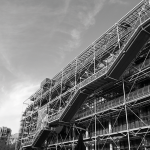Since 1999, the total number of people cycling in the City of London has increased by an impressive 292%. This equates to an additional 24,000 cycling journeys in 2017 compared to 1999. Cycling is now officially the single largest mode of transport counted on the city’s streets from 8am–9am.
These statistics, taken from the City of London’s ‘Traffic in the City 2018’ report, provide us with an opportunity to reflect upon the rise of cycling in the City and in central London and consider the future of London’s road network.
Maximising limited space
With London’s population forecast to grow significantly over the next decade, further pressure will be placed onto London’s already strained road network, worsening traffic conditions and increasing air pollution. Continuing with the status quo isn’t a feasible option and will only worsen matters.
Arguably the most interesting statistic from the report is regarding the utilisation of space. Pedestrians and cyclists only use an estimated 13% of total street space, yet move a staggering 55% of people travelling on City streets. In comparison, cars, taxis and motorcycles take up 53% of total street space, while moving only 19% of people. Comparable results have been recorded elsewhere in central London. Cycle Superhighway 6, northbound across Blackfriars Bridge, taking up less than 1 lane of general traffic, was found to be moving as many people as would be moved in 2.5 general traffic lanes.
Changing priorities
Between 1999-2012, the City witnessed annual increases of cycling of between 20-50%. It is important to recognise that this is without the creation of any form of segregated cycle infrastructure – something which has been proven to significantly increase the number of people cycling from all backgrounds. Despite this continuing rise of cycling, the City has raised concerns that cycling may have reached ‘peak cycle’ over the past five years – suggesting that significant changes in cycling infrastructure pro – vision and/or travel behaviour may be required to spur growth on City streets and avoid back-peddling.
This certainly raises the question – is it now time to accelerate the reallocation of London’s road space to cycling and pedestrians?
To provide the quality of infrastructure that makes people feel safe and enables cycling and walking trips, road space will require reallocation, with priority given back to cyclists and pedestrians.
Critical issues such as air pollution and congestion will only be resolved through the reduction of motor vehicles on our streets, with a shift of emphasis from moving vehicles through the streets, to moving people. The City’s move to restrict car, van and taxi usage from Bank Junction was a fantastic signal of intent, sending out a clear message that the City is willing to place the most efficient methods of transport at the top of its road hierarchy.
As a company which places people at the core of every aspect of our work, Momentum is a great believer in this and sees it as a vital step towards a London which is safer, cleaner, healthier and more efficient.
To read more articles like this, click here to read our recent edition of Connect.
